The Bank of Canada has hiked their key policy rate by 0.75% since March 2nd, which resulted in immediate rate increases for anyone currently in, or considering a variable rate mortgage. They are not going to stop there and increases of an additional 1.00% – 2.00% are expected over the next year. This would bring the prime rate up to 4.20% to 5.20%.
This leads to three big questions:
- What is the likelihood that the prime rate will increase by another 2.00%?
- What impact would this have on your payments?
- How many rate hikes will it take for you to lose out with a variable rate?
What Is The Likelihood That The Prime Rate Will Increase By Another 2.00%?
The prime rate increasing further is inevitable. It will happen. It’s just a matter of how much it will increase by.
The Bank of Canada will almost certainly increase their rate by another 0.50% on June 1st. it’s also possible that they could increase by another 0.50% with their following scheduled announcement on July 13th.
But will they stop there?
Possible, but I would bank on additional rate increases to follow (pardon the pun). I’m thinking that chances are strong that they will increase their rate two more times at the usual 0.25% per time before end of the year. They have made it clear that they are prepared to do whatever it takes to bring inflation under control.
As consumer debt levels are at an all-time high, the economic impact of each rate hike is more powerful. This would mean that fewer increases should be required.
It can also take anywhere from 12-24 months for them to realize the effects of each rate hike.
This might keep the increases to the lower end of the 1-2% predicted range. Time will tell and anything can happen.
The more aggressive the Bank of Canada gets with their increases, the sooner it will need to make a move in the opposite direction. Yes, more rate increases are expected, but we can also expect decreases to follow. While anything can happen, it’s estimated that these would come sometime in 2024.
How Would This Impact Your Payments?
If you’re with a major bank, then the payment will usually (not always) remain the same for the term. In this case, the increases will not impact your payments at all. When the rate moves, the portion of the payment that gets applied to principal vs. interest is what changes. If the rate increases, then less is applied to principal and more to interest. If it decreases, then it’s the opposite.
If you are with a non-bank lender, then your payments will usually change with the rate.
Which leads us to the question…. How much of a payment increase can you expect?
For every 0.25% increase in rate you can expect a jump in your payment of roughly $12 for every $100,000 you owe on your mortgage. For example, if you owe $500,000 then a 0.25% increase in rate would result in a payment increase of roughly $60 per month.
How Many Rate Hikes Would It Take For You To Lose With a Variable Rate?
The spread between fixed and variable rates is the largest it has been in years and can be anywhere from 1.50% to as much as 2.00%. This would mean the Bank of Canada would need to increase their rate by another 7-9 times for your variable rate to move above today’s lowest 5 year fixed. As I’ve mentioned many times before, this would not mean that you should have gone with a fixed rate. It just means that you’re now starting to give back some of your savings.
I’m going to run a few different scenarios to illustrate the effect of multiple rate increases by the Bank of Canada, and how this affects the true cost of your mortgage. The following examples are taking into consideration that rates are expected to increase by another 1.00% – 2.00% over the next year, with decreases to follow after two years.
I’m going to use the following numbers for each example which are rates that are available today that are available for many situations:
Mortgage amount: $500,000
Amortization: 25 years
5 year variable rate: Prime -1.15% (currently 2.05%)
5 year fixed rate: 3.79%
Current prime rate: 3.20%
Spread: 1.74%
Scenario One – Prime rate increases by 2.00% within the next year and no other movement thereafter.
| Time of Increase | % Rate Change | Rate After Increase |
| 1 Months | +0.50% | 2.49% |
| 2 Months | +0.50% | 2.99% |
| 3 Months | +0.25% | 3.24% |
| 6 Months | +0.25% | 3.49% |
| 9 Months | +0.25% | 3.74% |
| 1 Year | +0.25% | 3.99% |
Winner: Fixed by $2,229.44
Equivalent fixed rate: 3.878% (this means that this scenario would have been equal to having a 5 year fixed rate at 3.878%).
If this were to happen then choosing a fixed rate would have been the better choice and would come out $2,229.44 ahead of the variable option. As mentioned, a scenario without any rate drops over the next 5 years is not realistic.
In this scenario I have only included rate increases in the first year with no additional rate movement after that. It’s possible the Bank of Canada would increase beyond this, but not necessarily likely. Chances are stronger that we would see the rate start to fall again, which I have also left off this example. This makes the above scenario unrealistic, but I’m still including it for illustration purposes only. There has never been a time in history where the BOC has increased their rate but has not dropped within the same 5 year period.
Scenario Two – 2.00% increase in the first year (same as above) but with two 0.25% rate cuts along the way.
| Time of Increase | % Rate Change | Rate After Increase |
| 1 Months | +0.50% | 2.49% |
| 2 Months | +0.50% | 2.99% |
| 3 Months | +0.25% | 3.24% |
| 6 Months | +0.25% | 3.49% |
| 9 Months | +0.25% | 3.74% |
| 1 Year | +0.25% | 3.99% |
| 2 Years | -0.25% | 3.74% |
| 3 Years | -0.25% | 3.49% |
Winner: Variable by $3,606.32
Equivalent fixed rate: 3.647%
In this example you would win by choosing the variable rate by $3,606.32 over the term. It’s not likely that the Bank of Canada would cut their rate only twice in the next 5 years, but I still wanted to give this example. Plus…anything can happen.
Scenario Three – 2.00% increase within the first year and then four rate cuts to follow.
| Time of Increase | % Rate Change | Rate After Increase |
| 1 Month | +0.50% | 2.49% |
| 2 Months | +0.50% | 2.99% |
| 3 Months | +0.25% | 3.24% |
| 6 Months | +0.25% | 3.49% |
| 9 Months | +0.25% | 3.74% |
| 1 Year | +0.25% | 3.99% |
| 2 Years | -0.25% | 3.74% |
| 2 Years 6 Months | -0.25% | 3.49% |
| 3 Years | -0.25% | 3.24% |
| 3 Years 6 Months | -0.25% | 2.99% |
Winner: Variable by $8,156.65
Equivalent fixed rate: 3.466%
In this example, you would win by choosing the variable rate by $8,156.65 over the term.
Scenario Four – 2.50% increase by over 2 years with four rate decreases to follow
| Time of Increase | % Rate Change | Rate After Increase |
| 1 Month | +0.50% | 2.49% |
| 2 Months | +0.50% | 2.99% |
| 3 Months | +0.25% | 3.24% |
| 6 Months | +0.25% | 3.49% |
| 9 Months | +0.25% | 3.74% |
| 1 Year | +0.25% | 3.99% |
| 1 Year 6 Months | +0.25% | 4.24% |
| 2 Years | +0.25% | 4.49% |
| 2 Years 6 Months | -0.25% | 4.24% |
| 2 Years 9 Months | -0.25% | 3.99% |
| 3 Years | -0.25% | 3.74% |
| 3 Years 3 Months | -0.25% | 3.49% |
Equivalent Fixed Rate: 3.869%
Winner: Fixed rate by $208.33
While the fixed rate gets the win, it only inches out variable by $208.33. I’ve started the decreases 6 months later, but set them at three months apart. If I set them six months apart, then fixed rate would win by $2,002.98.
Scenario Five – 1.50% increase within 9 months and two more before year two with four rate decreases to follow
| Time of Increase | % Rate Change | Rate After Increase |
| 1 Month | +0.50% | 2.49% |
| 2 Months | +0.50% | 2.99% |
| 3 Months | +0.25% | 3.24% |
| 9 Months | +0.25% | 3.49% |
| 1 Year 6 Months | +0.25% | 3.74% |
| 2 Years | +0.25% | 3.99% |
| 2 Years 6 Month | -0.25% | 3.74% |
| 3 Years | -0.25% | 3.49% |
| 3 Years 6 Months | -0.25% | 3.24% |
| 4 Years | -0.25% | 2.99% |
Equivalent Fixed rate: 3.455%
Winner: Variable by $8,445.73
In this example the variable rate would save you $8,445.73 by the end of the term. This is with the decreases starting after 2 years 6 months and occurring every six months. If I space them three months apart then your savings would increase to $10,205.53 over the five year term.
Scenario Six – 1.00% increase within 9 months and two more before year two with four rate decreases to follow
| Time of Increase | % Rate Change | Rate After Increase |
| 1 Month | +0.50% | 2.49% |
| 2 Months | +0.25% | 2.74% |
| 3 Months | +0.25% | 2.99% |
| 1 Year 6 Months | +0.25% | 3.24% |
| 2 Years | +0.25% | 3.49% |
| 2 Years 6 Months | -0.25% | 3.24% |
| 3 Years | -0.25% | 2.99% |
| 3 Years 6 Months | -0.25% | 2.74% |
| 4 Years | -.025% | 2.49% |
Winner: Variable by $19,499
Equivalent Fixed rate: 2.827%
In this example the variable rate would save you $19,499 by the end of the term. This is with the decreases starting after 2 years 6 months and occurring every six months thereafter. If I space them three months apart then your savings would increase to $21,221.98 over the term.
If I threw in two more decreases at 2 years 9 months and at 3 years three months, then your savings would increase to $23,895.08
The Verdict
I personally think our economy is going to take a pretty large hit from all the expected increases. The reason why the Bank of Canada is being so aggressive is because they need to bring inflation under control. Much of the inflation is caused by a weakened supply chain that was a result of COVID. The unexpected war in Ukraine has fueled the problem even further. The rate hikes from the BOC will not fix the supply issue, but they will help to bring demand down to match the supply. This will likely force the economy into recession. As the supply chain returns, the Bank will need to reduce its rate to increase demand and to stimulate our damaged economy.
This is why I think chances are strong that we’ll see more than four rate decreases along the way, but the variable rate is already pretty far ahead in most of the above scenarios, so I have left it there.
The choice between fixed and variable is always a hot topic in the mortgage industry, but given all the upward activity from the Bank of Canada, it’s hotter than ever. If you’re still uncertain about fixed or variable then I would recommend reading my recent blog Are Fixed Mortgage Rates Now The Way To Go?
If you are currently in a variable rate then I would recommend reading my blog Should You Convert Your Variable Rate Into a Fixed)
Variable rate can still be a great choice. You just have to be mentally prepared for the inevitable increases to come.


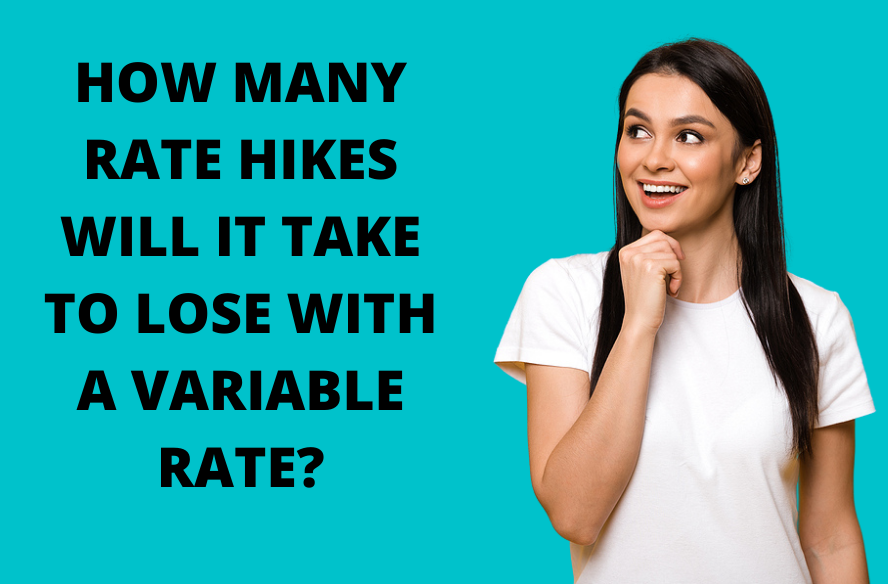

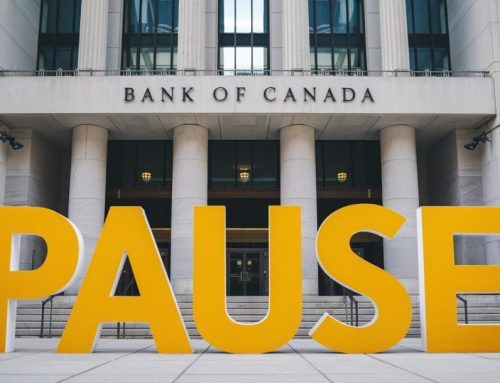
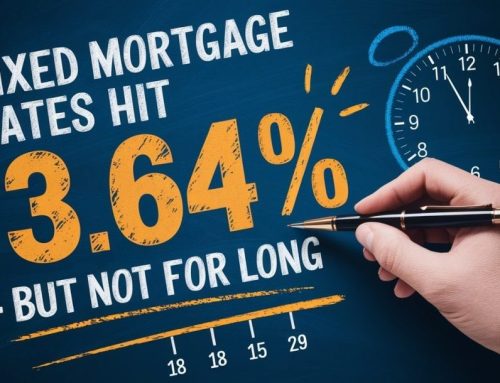
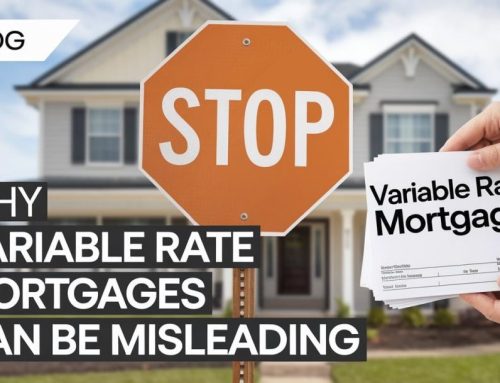
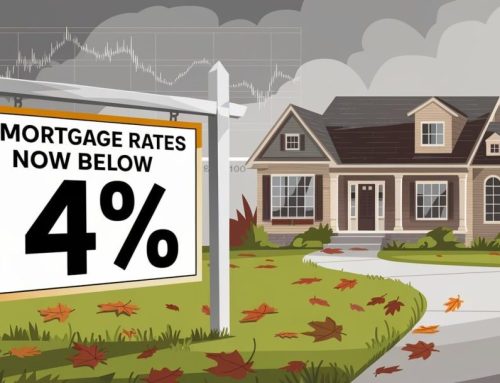
Leave A Comment